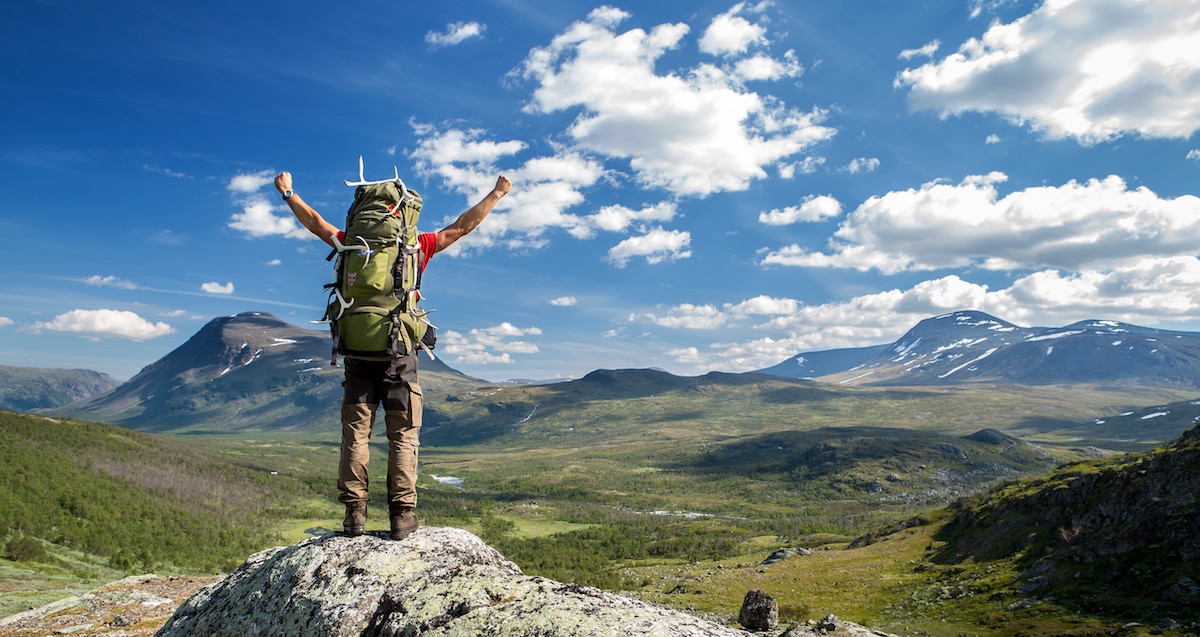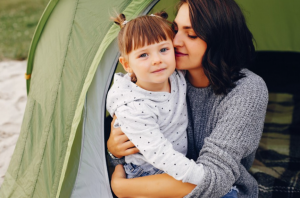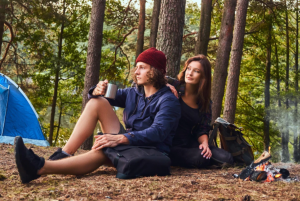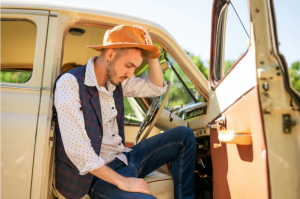Backpacking can be an incredibly enjoyable activity. Breathing the fresh air, marveling at the gorgeous sights around you, and resting underneath the clouds and stars are all experiences everyone should have at some point. But what if you’ve never gone backpacking before?
What We'll Cover
Suddenly, the idea of spending an extended period of time outdoors can be quite intimidating. The prospect of backpacking for the first time can indeed feel intimidating, but you have no reason to be concerned if you are prepared.
In this article, we will list the items you should bring for your first backpacking trip. We’ll also discuss some of the best tips for ensuring that you remain safe and in good condition while outdoors. With the introduction out of the way, let’s get you ready for that backpacking trip!
The Backpacking Equipment You Will Need
Even if you’re just going for a short backpacking trip, there are still a lot of things you need to bring with you to stay safe. Here are the most important things.
Backpack
The hiking backpack is arguably the most important piece of equipment if you are planning to stay outdoors. Because of the risks to your back, shoulders, and legs if you get an inappropriately sized backpack, it’s essential to find one in the right size with all of the features to promote ergonomic hiking. To ensure you get the right backpack, keep the following factors in mind.
Fit
A good backpack will be compatible with the size of your torso while simultaneously maintaining a firm grip over your hips. If the backpack has additional straps, make sure they fit in the right places too.
Frame
Internal-frame backpacks are great for stability while the ones with no frame included are extra light. Choose according to what you intend to do during your trip.
Pockets
Having pockets of different sizes present on the backpack will help with organizing your belongings.
Ventilation
Ventilation is a crucial backpack component especially for those who prefer going out during the summer. This feature can help you stay comfortable.
Additional Features
Look for backpacks that offer a place for your sleeping bag as well as a raincover. Those additional features can help you move around faster.
Compass
In the age of smartphones, many believe that buying a compass for hiking is no necessary. That kind of thinking is a good way to get yourself in trouble, though.
Don’t forget that smartphones can run out of batteries and break if they fall out of your pocket. Smartphones have become more durable in recent years, but they are still not built to withstand harsh outdoor environments.
Getting a compass ensures that you will be able to find your way back even when electronics have failed you.
Look for a compass that features a fluid-filled housing. The reason why is because the fluid within the housing can effectively reduce the movement of the compass’ needle in a good way. Even if you’re walking, you can take a look at your compass and have the arrow point you in the right direction.
Sleeping Bag and Tent
It’s hard to say that sleeping outdoors can be as comfortable as sleeping in your own bed, but by purchasing the right equipment, you can get real close.
If you’re a beginner backpacking by yourself for the first time, bringing a sleeping bag even if you have no plans to stay outdoors is a wise move as it prepares you for any unforeseen developments.
Prioritize looking for bags that make use of synthetic insulation materials if you want to be certain that you can remain comfortable. Synthetic materials used in those sleeping bags remain capable of keeping you warm even when they get wet, which is not something their down-stuffed counterparts can do.
Rectangular-shaped sleeping bags are best for comfort, but if you want to lighten the load you’re carrying, going with a mummy-style bag is the move.
When it comes to tents, the most important thing to consider here is the size.
The smaller backpacking tents should suffice for solo travelers and they are also prized for being lightweight. The most they can hold is two people though, so pass on them if you’re backpacking with friends or family.
Cabin or family tents are better suited to those who will be traveling in groups.
First Aid Kit
Don’t even think of setting foot outdoors without a fully-stocked camping first aid kit in your backpack. No matter how well prepared you think you are for the challenges of nature, unlikely events can still happen and put you in a compromising position.
So, what should you have in your first aid kit?
According to the Red Cross, a first aid kit must have:
- Absorbent compress dressings
- Adhesive bandages
- Adhesive cloth tape
- Antibiotic ointment packets
- Antiseptic wipe packets
- Aspirin
- Blanket
- Breathing barrier
- Cold compress
- Gloves
- Hydrocortisone ointment packets
- Gauze roll
- Personal medicine (if any)
- Roller bandage
- Sterile gauze pads
- Thermometer
- Triangular bandages
- Tweezers
Putting together a kit like that can take a lot of work, but you can also purchase a pre-assembled one. Just make sure you add any personal medication to the kit if you chose to buy one, and take a look at this information about how to put together a camping emergency kit.
Clothing
Backpacking means leaving behind the comfort provided by the four walls of your home and exchanging them for the at times harsh elements present in nature. Protect yourself accordingly by wearing the right clothing.
Start with your boots, because you’ll be dealing with plenty of rough terrain.
Big, rugged boots may look perfect for the outdoors, but they can make you feel like you’re walking with weights strapped to your feet. If you can find a light yet sturdy pair, go with that. Vegan hiking boots are a great option if you want durable boots that don’t harm animals.
It’s also important to wear boots that can support the different parts of your feet while offering enough room for them to move around. Other features you’ll want to see in your hiking boots include gusseted tongues, padded collars, and rands.
You should also remember to bring a jacket. The jackets you should specifically look for are the ones that are waterproof and don’t feel heavy when worn.
Take the time to pack some spare articles of clothing in your backpack as well. A change of underwear would be good and having a swimsuit on hand is never a bad idea. Bring some items made from warm materials, or bring a camping heater that can help you better endure a cold night. Additionally, bring a camping lantern so you can see comfortably when it gets dark. A solar camping lantern can enable you to skip the batteries and keep your pack light.
Determining Your Destination
Now that you’ve prepared all the items you will need for your backpacking trip, you can turn your attention to finding a suitable location for your maiden outdoor voyage.
While you may think that backpacking simply involves heading outdoors and letting the wind decide where you should go, things aren’t quite that simple. In some cases, you will have to reserve spots well in advance, and you’ll have to take steps to avoid getting lost in the wilderness. This is especially true if you are planning to go camping at a state or national park.
Check in advance if there will be spots open because you don’t want to build your entire weekend around your camping trip only to realize at the last moment that you cannot be accommodated.
If you don’t want to stay at a state or national park, you can still choose from private camps and commercial campgrounds.
Another option to consider is to join a backpacking tour. These tours often go through some of the most gorgeous locations, thus guaranteeing that you will have more than enough photos to post on Instagram.
Just remember to get your documents in order if you are looking to join a backpacking tour overseas. Purchasing some insurance ahead of your upcoming excursion is also a good move.
Meal Planning
One way to ensure that your backpacking trip doesn’t go well is to neglect your meals.
Food is probably not the thing you’re thinking the most about just days ahead of your camping trip, but you really should put more thought into your meals. By eating properly, you will be able to enjoy your time outdoors even more, have more energy to explore, and avoid running into any issues related to bodily functions.
First off, if you’re going to bring something that has even a small chance of spoiling, you need to have a camping cooler. Food poisoning sucks. Food poisoning when you’re in the middle of nowhere sucks even more. Be safe and keep any perishables in a cooler while you backpack.
Cookies, crackers, and energy bars will be your best friend outdoors due in large part to how well they hold up. For something more filling, pasta is a great camping classic. Fruits and veggies also deserve a spot in your backpack. Sandwiches are great for the outdoors as well, but again, keep them in a cooler if they have any meat on them.
You will also need some protein if you are going to spend multiple days outdoors. Bring a cast iron skillet and a lightweight camping stove, and you’ll be able to enjoy chicken, turkey, beef, and any other sort of meat. Just make sure to bring a meat thermometer to ensure that they aren’t undercooked. Thinner and leaner cuts of meat are probably your best bet for campfire cooking becuase they’re easier to cook.
As much as possible, you should also do all the prepwork you can at home. That way, you can just concentrate on cooking while you’re outside.
You should also keep your food in bear canisters to keep them from the prying paws and mouths of the animals that may stray into your campsite. Bear canisters can be heavy, but they will protect you from having a bear try to take your food.
Ensuring Access to Potable Water
Having potable water is a must for anyone about to spend time outdoors.
The good news is that there are now different types of water filters that can work even when you’re away from home. The type you ultimately choose should depend on if you’re backpacking alone or together with loved ones.
Solo travelers can get by with a water filter bottle. They are quick and easy to use, making them ideal for backpackers. Folks traveling with companions may find it easier to take a larger gravity filter. Water filter straws, water purification tablets, and UV water purifiers are also great ways to purify your water while camping.
The Cooking Essentials
Whether it’s for cooking up a quick meal or just heating up some water for your morning coffee, having supplies that can help you enjoy some warm food while you’re backpacking would be ideal.
Starting with the camping stove, a camping wood stove can be a great lightweight choice becuase it doesn’t rely on extra fuel aside from wood. Families and friends will probably need at least a two-burner stove along with a bigger fuel canister.
You should also search for stoves that have features in place to shield the flames from the wind. Those features can end up helping you cut down on fuel consumption.
As for your cooking surface, a camping cooking pot is great for the campfire because it retains heat incredibly well. Unless you’ll be cooking for a lot of people at once, stick to bringing smaller pots.
To make things easier on yourself, you can just get a camping mess kit. These portable wonders often include pots and pans that fit together for storage purposes. Look for the kit with utensils to get the most bang for your buck.
Reminders before You Head Out
Before wrapping up this article, here are some additional hiking tips you should follow if you want your first backpacking trip to be successful.
Test Your Gear Thoroughly
Assuming that all your hiking gear will work as expected is optimistic, and that’s not necessarily a good thing. Some faulty products can sometimes slip through the cracks and you have to be certain that you aren’t relying on them. Take the time to test out every item you purchase well before your trip so that you can avoid any unpleasant surprises.
Keep Your Pace Consistent
When backpacking through longer trails, it’s crucial that you maintain a consistent pace.
The supplies you packed may not be enough to sustain you if you fall behind schedule. Then again, moving too quickly can cause you to tire out, thus leaving you in no condition to continue.
Set a realistic pace before you set out on your expedition and do your best to stick to it to avoid any hiccups.
Prepare Your Body
Having the best pieces of backpacking equipment is not going to mean much if your body is simply not fit to handle the rigors of roughing it. Months before your backpacking trip, you should make it a point to hit the gym more often.
Exercises that work on your upper body and core muscles are important. A strong upper body will help you carry around your bulky backpack with no problem while your more powerful core muscles will help you stay balanced as you navigate difficult terrain.
Spare some time for cardio exercises as well as you need to have plenty of endurance before you tackle the outdoors.
Only Pack What You Need
There’s no need to pack a full wardrobe or your entire kitchen cabinet when you go backpacking.
Just go with the essentials like the compass, a jacket, some spare clothes, a portable filter, a mess kit, a camping stove, a bear canister full of food, your personalized first aid kit, your documents, and something to sleep in.
Those are the items you cannot afford to be without. Everything else is optional.
Conclusion
Backpacking for the first time can either become one of the best experiences you’ll ever have or one of the worst ordeals you’ll have to suffer through. One way to ensure that it becomes the former is to pack properly and prepare adequately. The outdoor environment can be tough, but armed with the right tools for survival, even a novice backpacker can manage.
The responses below are not provided, commissioned, reviewed, approved, or otherwise endorsed by any financial entity or advertiser. It is not the advertiser’s responsibility to ensure all posts and/or questions are answered.


![Tips to Go Camping With a Toddler [Different Weather]](/assets/images/375a17532f44c72a41d33b1008823cf3.png)


